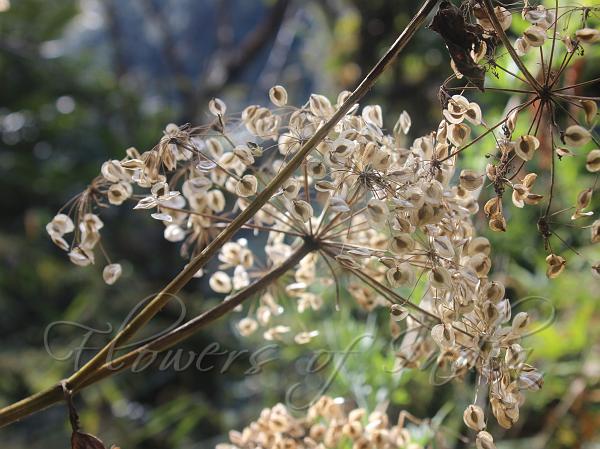|
| Nepal Hogweed |
|

|

| File size | 607022 |
| Original date | 11/14/17 8:56 AM |
| Resolution | 2048 x 1536 |
| Flash | Flash did not fire |
| Focal length | 47.0mm |
| Exposure time | 1/100s |
| Aperture | 6.3 |
| Focus Distance | |
| Metering Mode | Multi-segment |
| Camera make | Canon |
| Camera model | Canon EOS 600D |
| Sensor type |
|
|
|
|
Photo: |
Botanical name: Tetrataenium nepalense Family: Apiaceae (Carrot family)
Synonyms: Heracleum nepalense, Sium lobatum
Synonyms: Heracleum nepalense, Sium lobatum
Nepal Hogweed is a stout plant, up to 2 m tall. Roots
are cylindrical, about 15 cm long. Stem is solitary, velvet-hairy.
Basal leaves are long-stalked; leaf blade broad-ovate, 20-45 x 20-35
cm, trifoliolate or 1-2-pinnate, pinnae 3-7 pairs; leaflets broadly
ovate, 9-20 x 5-12 cm, both surfaces finely velvet-hairy, especially
along veins, margins sawtoothed. Sem leaves are similar to the basal,
reduced upward, smaller, 3-lobed stalkless on expanded sheaths. Flowers
are borne in umbels 15-30 cm wide; bracts 1-5, linear or absent; rays
numerous, 15-60 (or more), 6-9 cm, unequal, extending in fruit;
bracteoles 5-8, linear, unequal, 5-9 mm, persistent; umbellule
8-30-flowered. Calyx teeth subulate. Petals are white, occasionally
pinkish, outer flowers in umbel prominently radiant; radiant petals
2-lobed, to 3 × 2.3 mm. Young ovary is densely hairy. Fruit is obovoid,
9-11 x 7-10 mm; dorsal ribs thread-like, lateral ribs broadly winged,
wings 2.2-4 mm wide; vittae thread-like, solitary in dorsal furrows,
extending to 2/3 length of mericarp, 1-2 in lateral furrows, shorter
than dorsal, 2-4 on commissure, about 2/3 as long as mericarp. Seed
face plane. Nepal Hogweed is found in forests, scrub, grassy slopes,
roadsides in the Himalayas, at altitudes of 2000-4000 m, in Bhutan, NE
India, Myanmar, Nepal, Sikkim. Flowering: June-August.
| Identification credit: Nimesh Chamling | Photographed in Maniping Reserve Forest, West Sikkim. |
• Is this flower misidentified? If yes,